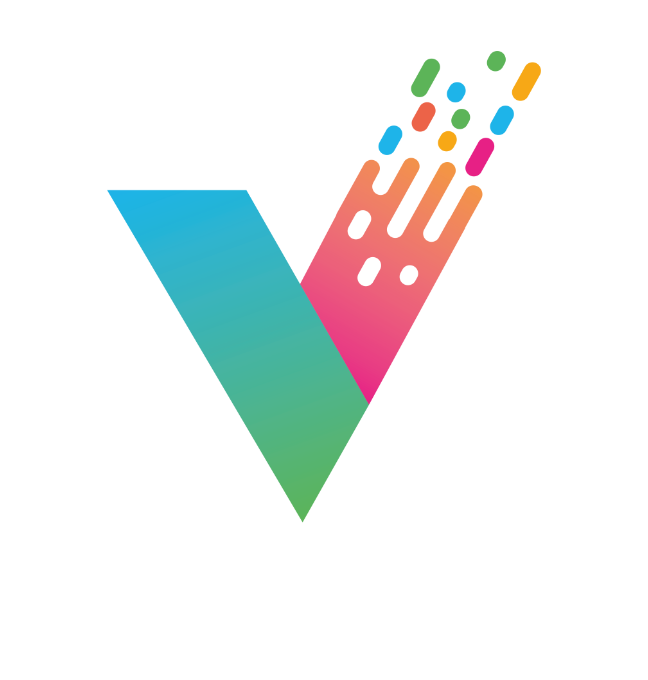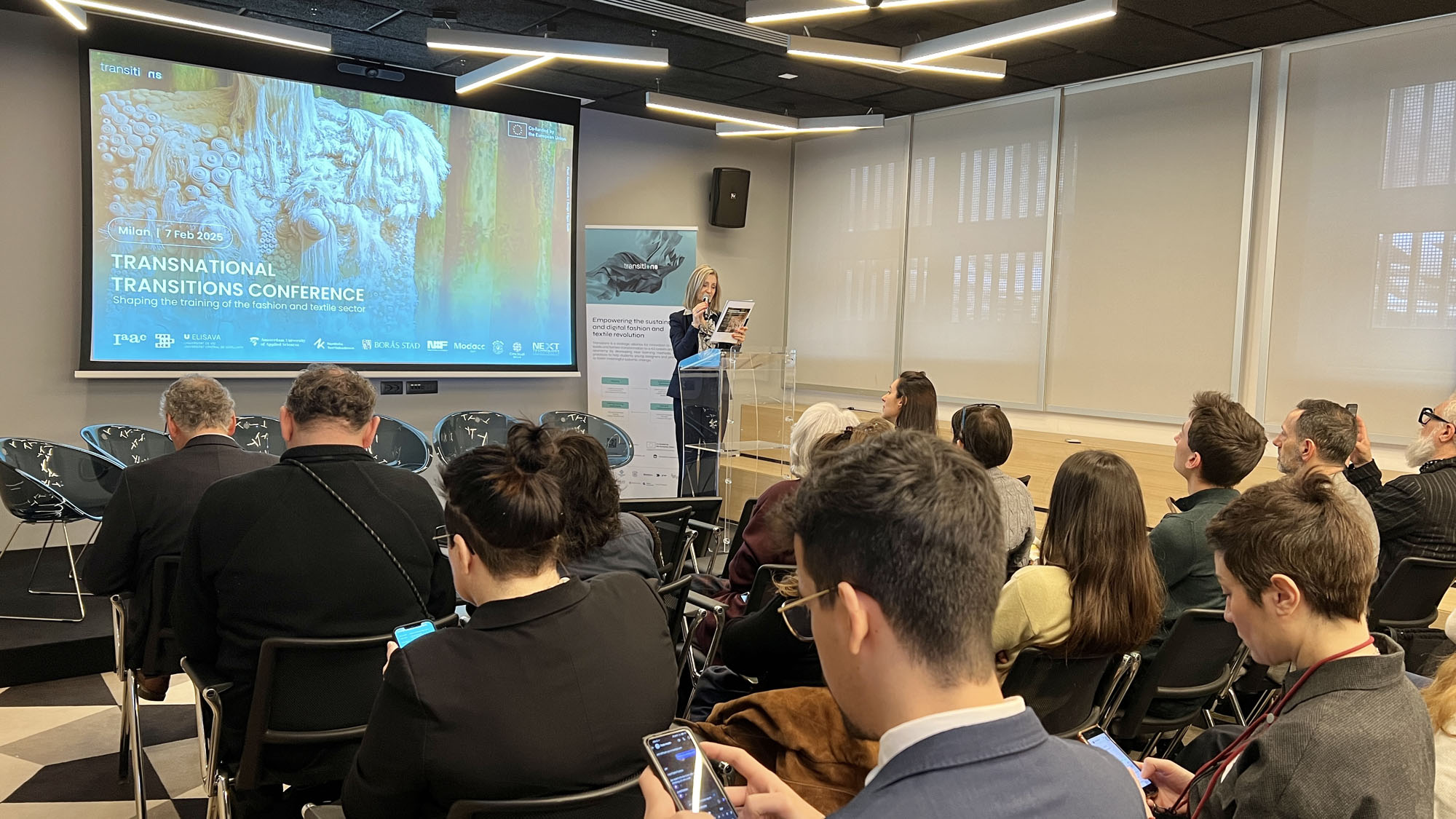
Transitions project resources for VET, HEI and startups
We are fortunate that Erasmus+ currently provides funding for a number of projects working on the topic of textile and clothing sustainability; keeping track of their results helps collectively accelerate the green transition (that’s why we have a list of related projects on our website!). One of the “sister projects” we’ve been keeping a close eye on is Transitions, which held its final conference in Milan on February 7, and we were there to briefly present our Green VETRINE course and to report on their results.
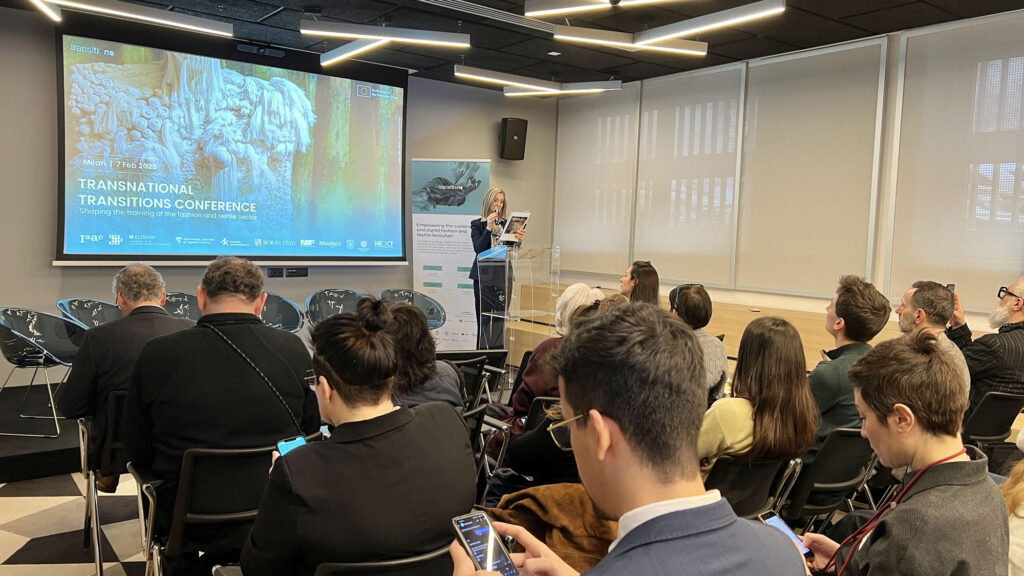
The conference was held at Confindustria Moda’s headquarters in Milan, Italy
Structured in a similar way to the VETRINE project, Transitions began with a robust study of market needs and skills mismatches for a future circular economy transformation that informed the creation of a toolkit of learning materials that was developed and tested in pilots in an iterative and collaborative manner.
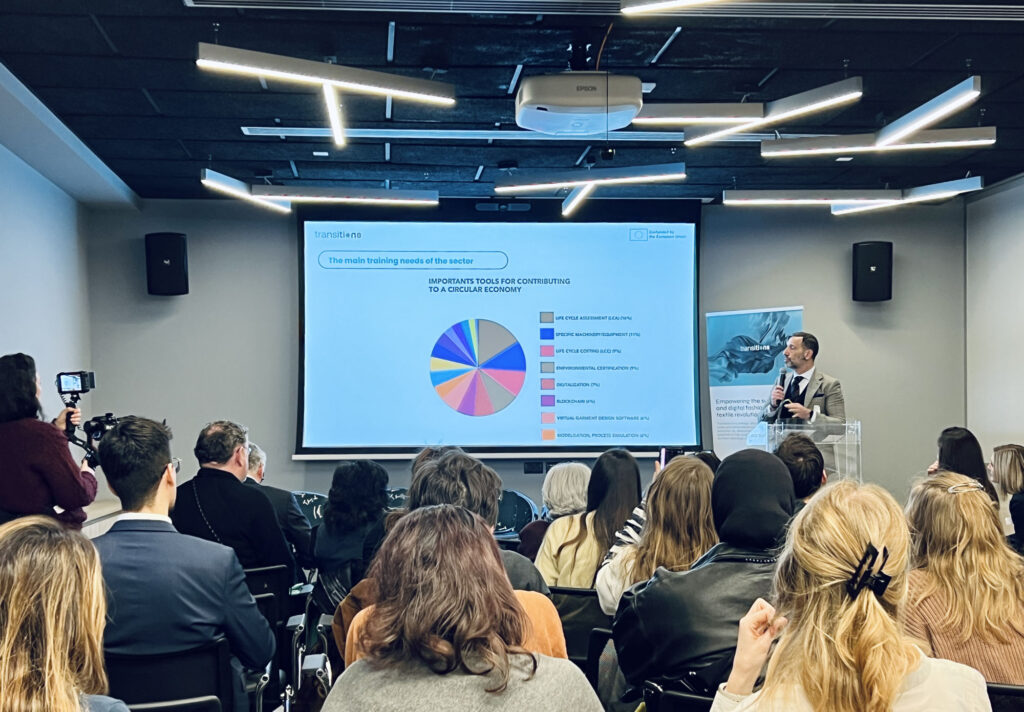
Some study results presented by Enrico Venturini of Tecnotessile
For their study (read full report), they held a survey with 158 respondents made up of VET, HEI and Professionals of the T&F sector of six European countries: Italy, Spain, Sweden, the Netherlands, France, Germany. Some of the results (which date to early 2023) are particularly interesting:
- Respondents identify the most strategic areas in which the industry can promote transition as “recycling and environmental sustainability” (30%), industry 5.0 (23%).
- Amongst the skills needed for the transition, respondents recognize the key role that digital skills play, noting the most important are data analysis (15%), digital manufacturing operation (12%), and knowledge of advanced digital systems (12%).
- Eco-design is the top “green skill” needed, followed by knowledge of recycling technologies.
- Life Cycle Assessment is the top tool that companies can use to contribute to circular economy
- Industry is looking for courses to train new qualified personnel, and the most appropriate according to respondents would be a mid-term course (100-500 hours) – sufficient time to transfer a lot of information and skills and to deepen some topics for students to take up later. Courses should integrate practice and theory. There is a preference for short modules versus a long integrated course.
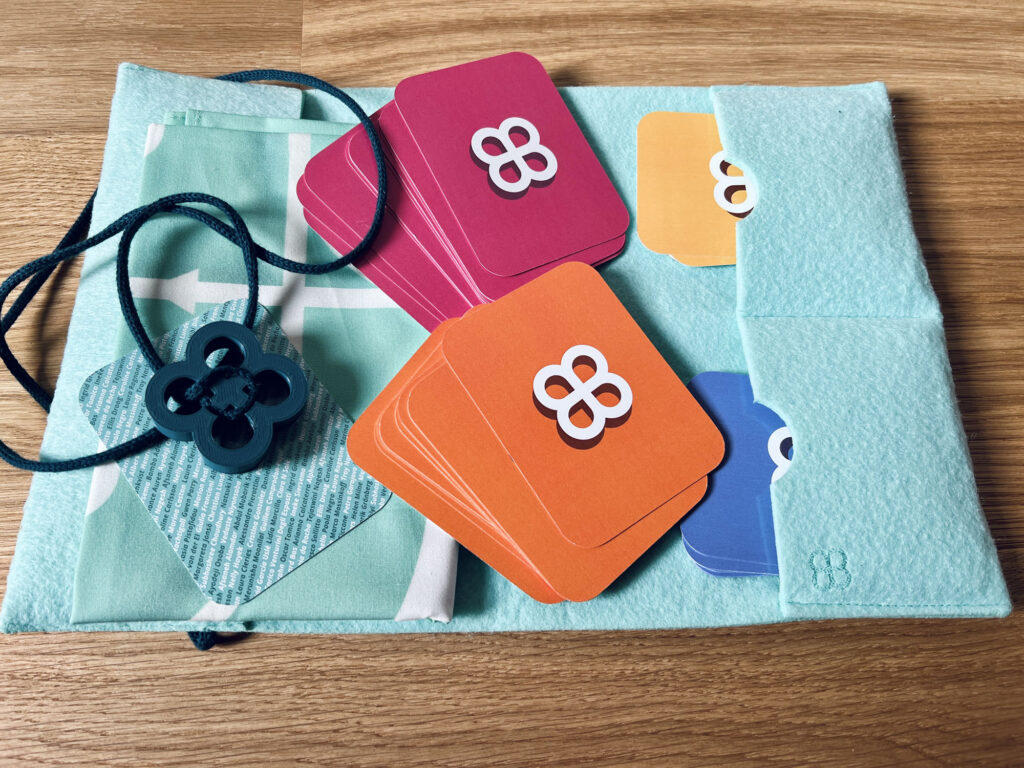
The Loopholes Toolkit
The Loopholes Toolkit is the collaboratively designed output of the project, and although much can be done using its digital tools, one particularly nice aspect is that it includes a physical card game packaged in an attractive felt kit! The game guides stakeholders through the complexities of integrating new technologies into circular business models.
Users begin by selecting a target product or service and setting a development timeline; the board then leads them through various phases and challenges. Strategy cards provide educational insights and prompts for each board quadrant (information management, design, produce, and use) through two phases, an assessment phase to enable reflection on current standing, and a generative phase that stimulates creativity and innovation on the road towards actionable strategies. The board is used in combination with a series of project description templates and journey canvases depending on who is using the game and to what end. Indeed, one of the most challenging aspects in developing the Loopholes Toolkit was finding methodologies that worked at all levels, from vocational students through university students and into companies, and for various goals or from numerous perspectives.
As the process continues to be refined, an up to date version of the game and its instructions can be downloaded from the website https://circularloopholes.net. We’ve ensured that our partner institutions have copies of the kit to test and play!
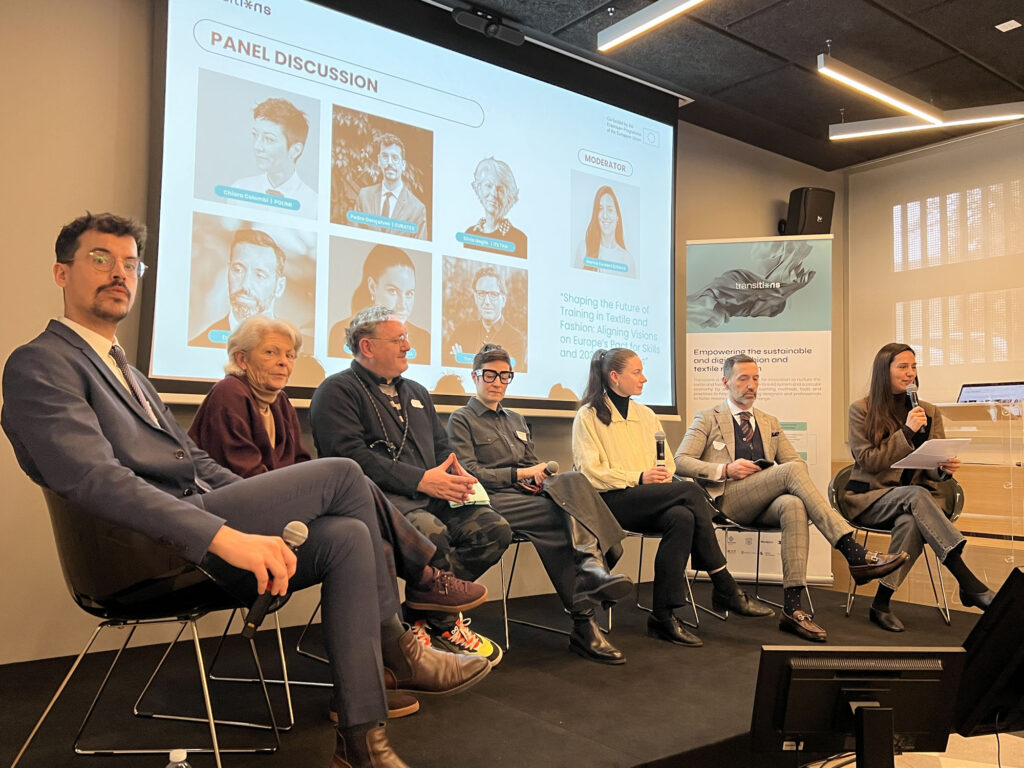
Roundtable of experts
Overall, the conference day not only highlighted project results but provided an opportunity to discuss some relevant themes. A roundtable, which could have gone on much longer if we had been less hungry, raised important points for future consideration. Moderator Marina Castan asked what institutions can do to make studying textiles more “sexy” – indeed, especially in regions with a strong textile history, we often see young people not wanting to go into the industry of their parents and grandparents. We also know that “fashion design” has more appeal than the technical aspect of textile production, yet Europe needs to be excellent and competitive in this more than anything. No good answers really came up, though on further reflection, some of what we can do is to communicate to potential students what the job truly consists of, what the opportunities for advancement are, and what difference they could make in the world. A second factor that was not discussed is that, in my opinion, the industry itself has to evolve, and communicate this evolution, for young people to be attracted to it. Textile workplaces need to become more welcoming, flexible, innovative and safe to align with the desires of the new workforce. This may involve physical overhauls to rethink manufacturing spaces, business model evolutions, and employee training. VET and HEI institutions could play a role in helping companies make positive change.
